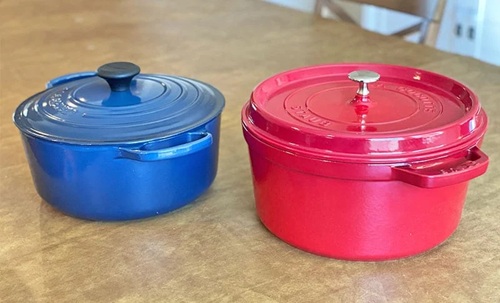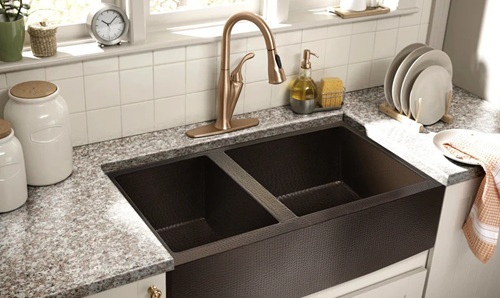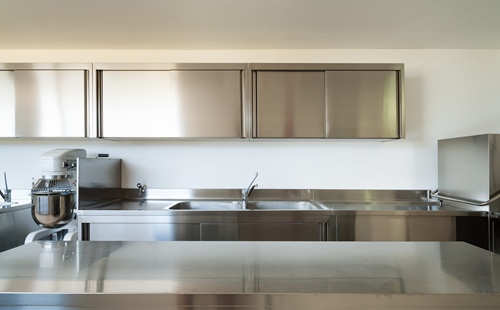When it comes to timeless kitchen tools, few can match the reputation and durability of cast iron cookware. From sizzling steaks and golden cornbread to hearty stews and crispy dosas, cast iron has been a staple in kitchens across generations and continents. Known for its rustic charm and unbeatable heat retention, this cookware has a cult-like following among chefs, foodies, and home cooks alike.
But despite its legacy, cast iron isn’t perfect for everyone. Lets explore the pros and cons of cast iron cookware, so you can decide whether this heavy-duty classic deserves a permanent place in your kitchen.

What is Cast Iron Cookware?
Cast iron cookware is made by pouring molten iron into molds, creating dense, thick, and extremely durable cooking tools such as skillets, frying pans, Dutch ovens, griddles, and tawa pans. Some are bare cast iron, while others come enameled for easier care and cooking versatility.
It’s known for its excellent heat retention, high-heat tolerance, and ability to last for generations — often outliving its owners!
Pros of Cast Iron Cookware
1. Superior Heat Retention and Distribution
Cast iron excels at holding and evenly distributing heat, making it perfect for searing meats, slow-cooking, frying, and baking. Once hot, it stays hot — which is crucial for consistent cooking.
Fact Check: Cast iron retains heat longer than aluminum or stainless steel, allowing for even browning and reduced need for high burner settings.
2. Naturally Non-Stick (When Seasoned)
When properly seasoned, cast iron develops a natural non-stick surface that rivals chemical coatings. Over time, the more you cook with it (especially oily or fatty foods), the better it gets.
Tip: To season, coat the pan with a thin layer of oil and bake it at high heat. Repeat this regularly to maintain a smooth, non-stick layer.
3. Extremely Durable and Long-Lasting
Cast iron is nearly indestructible when properly cared for. It doesn’t warp, chip, or break easily and can be used on all heat sources — gas, electric, induction, oven, grill, and even open flame.
Bonus: Many families pass down cast iron skillets as heirlooms.
4. Adds Iron to Your Diet
Cooking acidic or moist foods in bare cast iron can leach small amounts of dietary iron into the food — which can help combat iron deficiency, especially in vegetarian diets.
Fact: According to studies, cooking in cast iron can increase iron content in food by up to 16–20%.
5. Versatile Cooking Capabilities
Cast iron cookware is multi-functional: it can go from stovetop to oven to grill. From baking bread to frying pakoras to making curries or even pizzas, it’s a workhorse in any kitchen.
Cons of Cast Iron Cookware
1. Heavy and Bulky
Cast iron cookware is significantly heavier than other materials like aluminum or stainless steel. This makes it difficult for some users to handle — especially elderly individuals or people with wrist issues.
Example: A 10-inch cast iron skillet can weigh 2.5 to 3.5 kg, compared to just 1 to 1.5 kg for an aluminum pan of the same size.
2. Requires Regular Seasoning and Maintenance
Bare cast iron requires routine seasoning and proper care. If not dried or oiled properly after washing, it can rust easily. Unlike nonstick pans, it demands more time and attention.
Care Tip: Never soak in water or use harsh soap. After cleaning, dry thoroughly and apply a light oil coating before storing.
3. Reactive with Acidic Foods
Bare cast iron is not ideal for cooking acidic ingredients like tomatoes, vinegar, lemon-based sauces, or tamarind. These can strip the seasoning, impart a metallic taste, and cause rusting over time.
Solution: Use enameled cast iron if you frequently cook acidic recipes.
4. Slow to Heat Up
While cast iron retains heat well, it takes longer to heat up initially. This can be inconvenient if you’re in a hurry.
Pro Tip: Preheat the pan for several minutes before adding oil or food to ensure even cooking.
5. Not Dishwasher Safe
Cast iron cookware cannot be cleaned in the dishwasher, and submerging it in water for too long can lead to rust. It must be hand-washed, dried immediately, and oiled — a process that may feel high-maintenance to some.
Enameled vs. Bare Cast Iron: A Quick Comparison
| Feature | Bare Cast Iron | Enameled Cast Iron |
| Needs Seasoning | Yes | No |
| Rust Risk | Yes | No |
| Handles Acidic Foods | Poorly | Excellent |
| Appearance | Rustic, matte | Colorful, glossy |
| Maintenance | High | Moderate |
| Price | More affordable | More expensive |
Is Cast Iron Cookware Right for You?
✅ Choose Cast Iron If:
- You love slow-cooked, high-heat, and seared recipes.
- You’re looking for durable, lifetime cookware.
- You’re comfortable with some maintenance and seasoning.
- You want chemical-free non-stick cooking.
- You appreciate traditional, rustic aesthetics in the kitchen.
❌ Avoid Cast Iron If:
- You prefer lightweight, quick-to-use cookware.
- You don’t want to deal with seasoning or oiling.
- You cook lots of tomato-based or acidic dishes.
- You use a dishwasher for most of your cleaning.
Final Verdict
Cast iron cookware is a time-tested kitchen essential known for its durability, versatility, and cooking performance. While it requires a little more TLC than modern alternatives, it rewards the dedicated cook with exceptional results, unmatched heat retention, and a connection to traditional cooking.
If you’re willing to learn the basics of care and appreciate cookware that improves with age, cast iron could easily become your go-to companion in the kitchen — one that will serve you for decades, if not generations.

